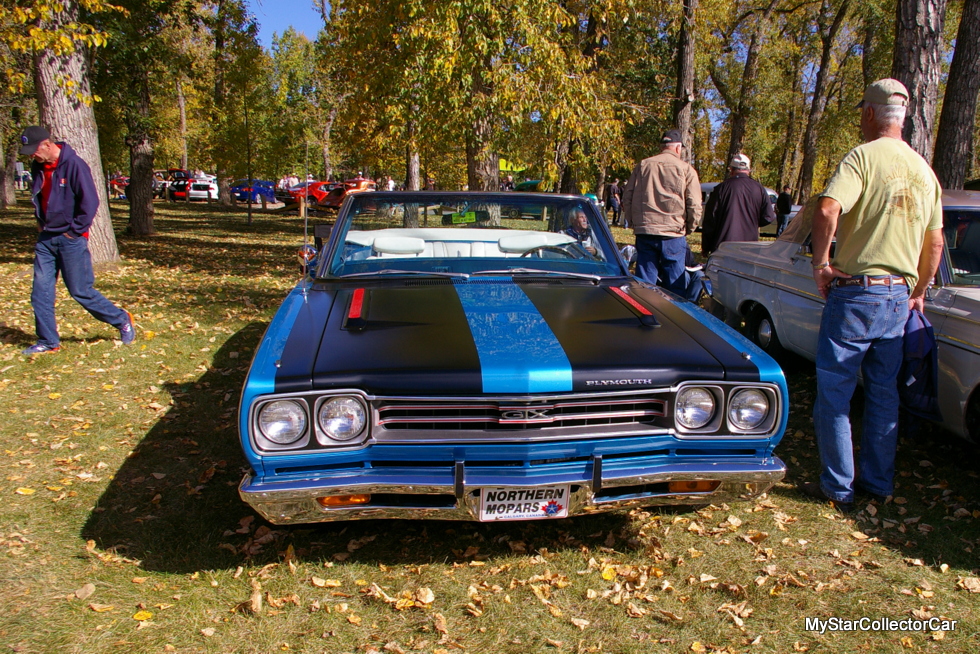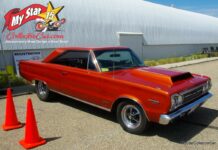The 1969 Plymouth GTX was a more expensive stablemate of its younger Road Runner sibling.
The GTX debuted in 1966 and cornered the market on high end Plymouth muscle cars until the 1968 debut of the inexpensive Road Runner.
The Plymouth GTX was known as a B-body in Mopar lingo and fit the intermediate car market in direct competition with Chevelle SS models, Pontiac GTOs and Ford Torino GTs in the big block wars of the late 60s.
The rules were pretty simple: put pedal to metal and may the baddest car win in the street battles during the tumultuous Big Three car wars in the 60s. The Plymouth GTX debuted in 1966 with two engine choices that ensured Mopar would not take a back seat to any of its rivals.
The original GTX engine options were a 440 big block monster or an elephant-sized 426 Hemi. Either one of these brutes ensured a Plymouth GTX would take no prisoners in an all-out horsepower war with its Detroit rivals.
Larry Gammon was an impressionable young car guy when the GTX entered the muscle car turf wars in the 60s. By that time, he had already picked a side as a devout Mopar guy and was a big fan of the intermediate Plymouth with the giant engine under its hood scoops.
These cars were capable of winning on the streets as often as King Richard won on the track behind the wheel of his electric blue Plymouth during that go-fast era.
Larry’s early Mopar influences were a driving force behind his decision to purchase his 1969 Plymouth GTX convertible and bring it back to its original glory. The car had suffered over the years because most of these muscle cars were driven hard and took plenty of abuse during their time on the road.
Larry’s car was no exception because it showed serious signs of wear and tear, including a non-factory blue paint job on the convertible. A GTX convertible with a 440 engine has enough torque to inflict plenty of stress on the chassis and frame, so Larry added a few extra refinements to the car’s engineering, including beefed-up sub-frame connectors.
He put a factory code blue paint job on his GTX and restored its overall look back to original specs. Subtle improvements included an aftermarket power steering box that gives the GTX a modern feel and wheel response without any obvious change to the factory appearance of the system.
The entire process took five years because Larry wanted to make sure it was done carefully and right the first time.
Larry noted the rarity of his ’69 GTX and told MSCC his car still has its factory 440 engine and four-speed manual transmission. This power-train combination, along with a few other features, makes this GTX one of only about 100 convertibles to leave the factory in 1969.
The rarity of the GTX does not discourage Larry from driving his prized convertible. In fact, he completed a drive through the Canadian Rockies in his GTX just last summer because he likes to enjoy the car of his dreams on the road.
It’s where every car and owner truly belong in the grand scheme of the hobby.
Jim Sutherland
CLICK HERE to Like us on Facebook
CLICK HERE to Follow us on Twitter
CLICK HERE to Follow us on Pinterest
Please re-post if you like this article.



































































